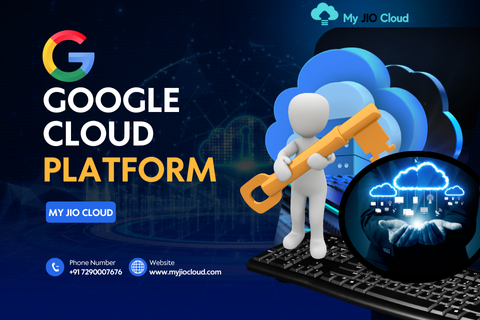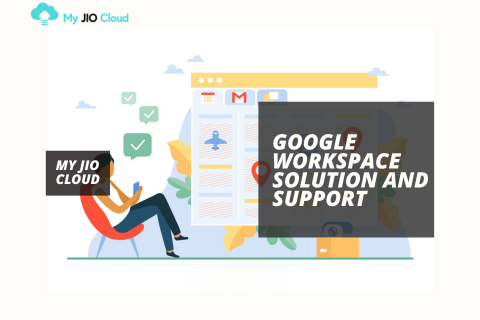How to Migrate AWS Cloud to Google Cloud: A Comprehensive Guide
In today's dynamic digital landscape, agility and innovation are paramount. While Amazon Web Services (AWS) has long been a dominant force in cloud computing, many organizations are now exploring Google Cloud Platform (GCP) for its cutting-edge data analytics, machine learning capabilities, and competitive pricing. The decision to migrate AWS cloud to google cloud can be a strategic move to unlock new potential, but it requires careful planning and execution.
This comprehensive guide will walk you through the entire process of how to migrate aws cloud to google cloud, from initial assessment and strategy selection to execution and post-migration optimization. Whether you're looking to enhance performance, reduce costs, or leverage GCP's unique features, this article provides the roadmap you need for a successful transition.
Why Migrate AWS Cloud to Google Cloud?
Before diving into the technicalities, it's crucial to understand the driving forces behind such a significant undertaking. Organizations choose to migrate aws cloud to google cloud for several compelling reasons, each offering a distinct competitive advantage.
Key Motivations for Migration
-
Advanced Data Analytics and Machine Learning: Google has a long-standing reputation as a leader in data processing and AI. GCP offers a powerful suite of tools like BigQuery, AI Platform, and TensorFlow that are often more integrated and performant than their AWS counterparts. For businesses that rely on data-driven insights, the decision to migrate aws cloud becomes a strategic imperative.
-
Cost Optimization: GCP's billing model, particularly its Sustained Use Discounts and per-second billing, can offer significant cost savings over AWS, especially for long-running, stable workloads. A well-planned migration can lead to a lower total cost of ownership (TCO).
-
Superior Networking: Google boasts a massive, private global fiber optic network that connects its data centers. This often results in lower latency and higher performance for applications, a critical factor for global user bases.
-
Commitment to Open Source: Google is a major contributor to the open-source community, pioneering technologies like Kubernetes (with Google Kubernetes Engine - GKE). This open-source-first approach prevents vendor lock-in and provides greater flexibility, a key consideration when you migrate aws cloud to google cloud.
-
Multi-Cloud and Hybrid Cloud Strategy: Many enterprises are adopting multi-cloud strategies to avoid dependency on a single vendor and leverage the best services from each provider. Migrating some or all workloads from AWS to GCP is a logical step in implementing this robust strategy.
Pre-Migration Planning: Your Blueprint for Success
A successful migration is 90% planning and 10% execution. Rushing into the process to migrate aws cloud to google cloud without a solid plan is a recipe for disaster, leading to budget overruns, extended downtime, and performance issues.
Phase 1: Assess and Discover
The first step is to gain a deep understanding of your existing AWS environment. You can't migrate what you don't know you have.
-
Inventory Your Assets: Create a comprehensive inventory of all your AWS resources. This includes every EC2 instance, S3 bucket, RDS database, Lambda function, IAM role, and VPC configuration. Utilize automated discovery tools to ensure nothing is missed.
-
Dependency Mapping: This is arguably the most critical step. Identify and map the intricate dependencies between your applications, databases, and infrastructure components. A failure to understand these connections can cause critical application failures post-migration. For example, which applications connect to which databases? What APIs do they call?
-
Performance Baselining: Collect performance metrics for your key applications on AWS. This data will serve as a benchmark to validate the success of the migration and ensure performance meets or exceeds expectations on GCP.
Phase 2: Define Goals and Choose a Strategy
Once you have a clear picture of your environment, you can define your migration goals. What does success look like? Is it reduced cost, improved performance, or increased developer agility? With your goals in mind, you can select the right migration strategy. The "6 R's" of cloud migration provide a useful framework:
-
Rehost (Lift-and-Shift): This involves moving your applications from AWS to GCP with minimal changes. It's the fastest approach and is ideal for organizations looking for a quick win. Google's Migrate for Compute Engine is an excellent tool for this.
-
Replatform (Lift-and-Reshape): This strategy involves making a few cloud optimizations during the migration process. For example, you might migrate aws cloud RDS databases to Google's fully managed Cloud SQL to reduce database management overhead.
-
Repurchase (Drop-and-Shop): This means moving to a different product, typically a SaaS solution. For instance, you might move from a self-hosted CRM on EC2 to a cloud-based solution like Salesforce.
-
Refactor/Rearchitect: This is the most complex approach, involving redesigning your application to be cloud-native and fully leverage GCP's capabilities (e.g., moving from a monolithic application to microservices on GKE). This strategy offers the greatest long-term benefits.
-
Retain: Some applications may not be suitable for migration due to compliance, cost, or technical constraints. It's perfectly acceptable to leave some workloads on AWS.
-
Retire: Decommission applications that are no longer needed. The discovery phase often uncovers obsolete services that can be retired to save costs.
Choosing the right mix of these strategies is fundamental when you plan to migrate aws cloud to google cloud.
A Step-by-Step Guide to Migrate AWS Cloud to Google Cloud
With a solid plan in place, you can begin the technical execution. The process is typically broken down into distinct phases.
Phase 3: Plan and Design Your GCP Environment
This phase involves mapping your AWS resources to their GCP equivalents and designing your target architecture.
-
Service Mapping: Create a clear mapping from AWS services to GCP services.
-
Compute: AWS EC2 maps to Google Compute Engine (GCE).
-
Storage: AWS S3 maps to Google Cloud Storage; AWS EBS maps to Persistent Disks.
-
Databases: AWS RDS maps to Cloud SQL; AWS DynamoDB maps to Cloud Firestore or Bigtable.
-
Networking: AWS VPC maps to Google Virtual Private Cloud (VPC).
-
Identity: AWS IAM maps to Google Cloud Identity and Access Management (IAM).
-
-
Network Architecture: Design your GCP network topology. This includes setting up VPCs, subnets, firewall rules, and connectivity between your on-premises environment and GCP (using Cloud VPN or Cloud Interconnect).
-
Security and Compliance: Replicate or enhance your security posture. Configure IAM roles and permissions based on the principle of least privilege. Ensure your new architecture meets all regulatory and compliance requirements.
Phase 4: Execute the Migration
This is where the actual move happens. It's crucial to perform migrations in waves or phases, starting with less critical applications to build experience and minimize risk.
-
Data Migration: Migrating data is often the most challenging part.
-
For Object Storage: Use Google's Storage Transfer Service to migrate data from S3 to Cloud Storage efficiently and securely.
-
For Databases: Use the Database Migration Service (DMS) to migrate databases like MySQL, PostgreSQL, and SQL Server to Cloud SQL with minimal downtime. DMS supports both one-time and continuous replication.
-
For Servers: For a Rehost strategy, Migrate for Compute Engine is a powerful tool. It streams the workloads from AWS to GCP, allowing you to test in the cloud before cutting over, drastically reducing downtime. This tool is a cornerstone for anyone looking to migrate aws cloud to google cloud with ease.
-
-
Application Migration: Move your application code and configurations. For containerized applications on ECS or EKS, migrating to GKE is often straightforward. For VM-based applications, you'll deploy the VMs created by Migrate for Compute Engine.
Phase 5: Validate and Optimize
The work isn't over once the migration is complete. The final phase is critical for long-term success.
-
Testing: Thoroughly test your applications in the new GCP environment. This includes functional testing, performance testing, and security testing to ensure everything works as expected. Compare performance against the baselines you established in the assessment phase.
-
Cutover: Once you are confident that the applications are running correctly on GCP, schedule the final cutover. This involves updating DNS records to point users to the new environment.
-
Optimization: The journey to migrate aws cloud to google cloud concludes with optimization. Use Google Cloud's tools to fine-tune your environment.
-
Cost Management: Use the Cost Management dashboard and Recommender to identify opportunities for cost savings, such as rightsizing VMs or leveraging Sustained Use Discounts.
-
Performance Tuning: Monitor application performance using Cloud Monitoring and make adjustments as needed.
-
Automation: Implement automation using tools like Cloud Deployment Manager or Terraform to manage your infrastructure as code (IaC), improving consistency and efficiency.
-
Overcoming Common Migration Challenges
When you migrate aws cloud, you may encounter several hurdles. Being aware of them can help you prepare and mitigate risks.
-
Downtime: Plan your migration waves carefully and use tools like Migrate for Compute Engine and DMS that are designed for minimal downtime migrations.
-
Security Gaps: Conduct a thorough security review of your new GCP architecture. Don't assume that security configurations will transfer seamlessly.
-
Skills Gap: Your team may be experts in AWS but new to GCP. Invest in training and certification for your staff. Consider partnering with a Google Cloud expert to guide you through the process.
-
Unexpected Costs: Hidden costs can derail a migration budget. A thorough discovery phase and a detailed TCO analysis are essential to accurately forecast expenses.
Successfully navigating the project to migrate aws cloud to google cloud is a testament to strong technical planning and strategic foresight. By following a structured methodology, leveraging the right tools, and preparing for common challenges, your organization can seamlessly transition to Google Cloud and unlock a new world of technological possibilities.







